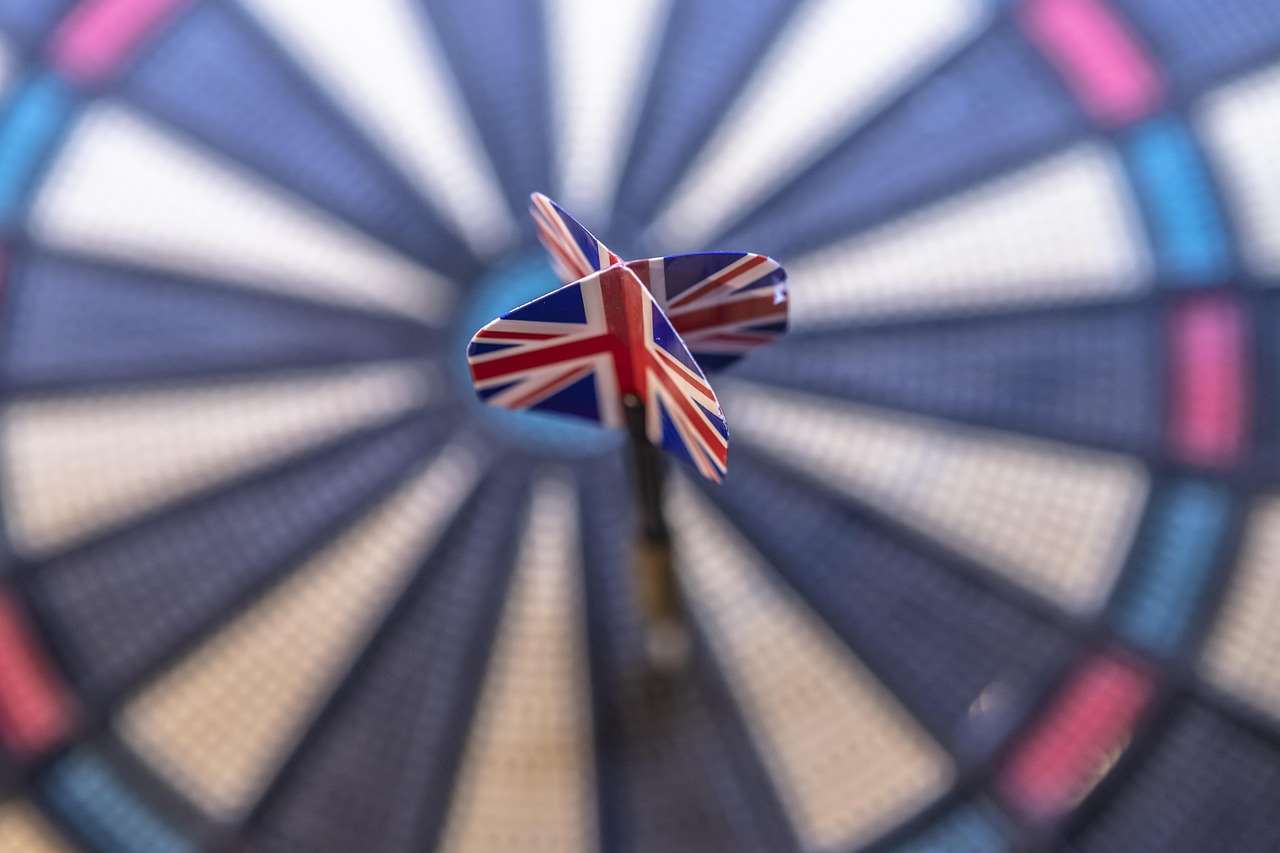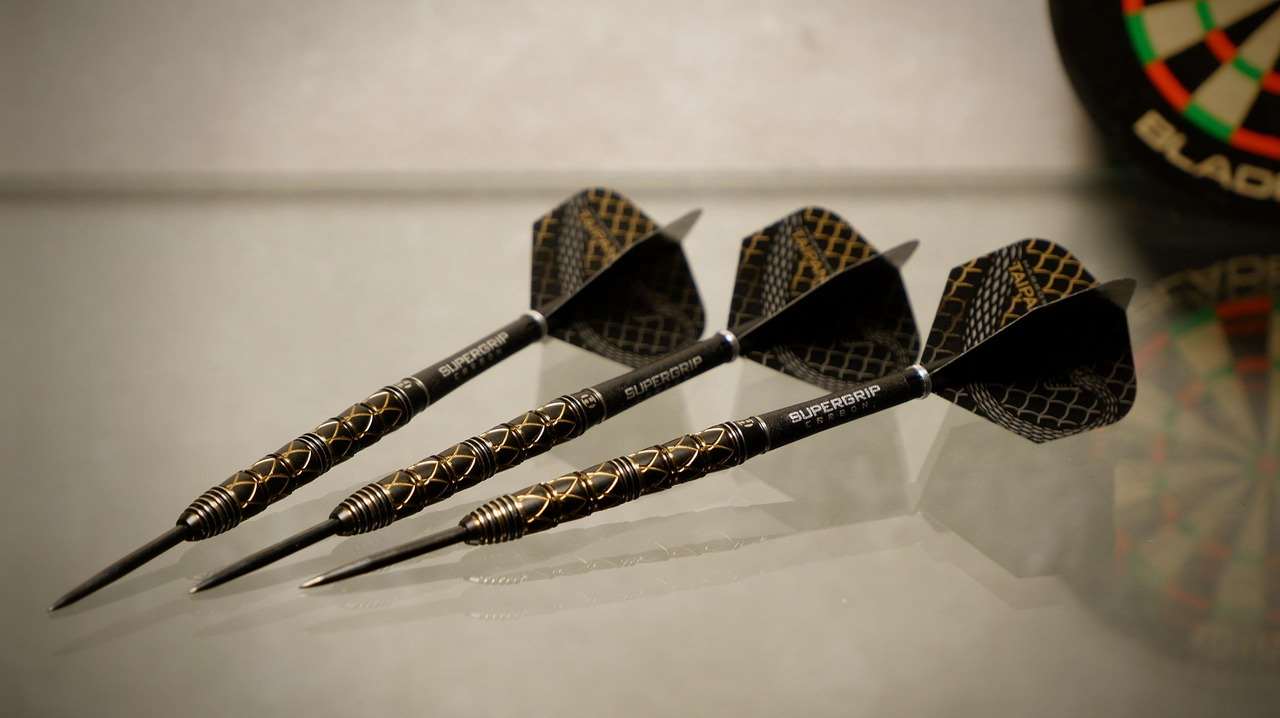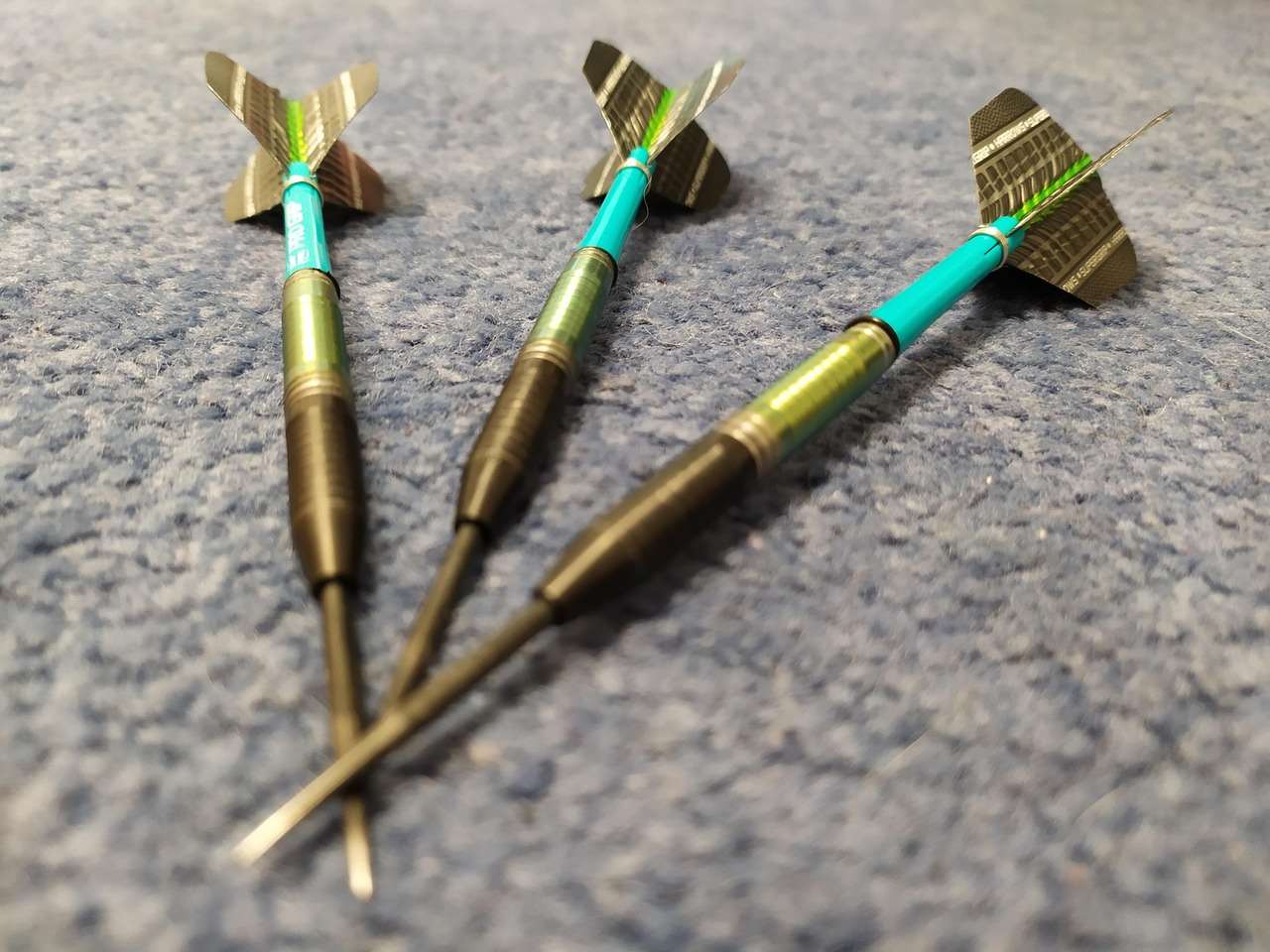Finding the optimal dartboard to throw line distance is crucial for consistent scoring and an enjoyable game. This article will not only explain how to determine the perfect distance but also cover essential setup considerations and common mistakes to avoid, helping you master your throw.
⚠️ Still Using Pen & Paper (or a Chalkboard)?! ⚠️
Step into the future! The Dart Counter App handles all the scoring, suggests checkouts, and tracks your stats automatically. It's easier than you think!
Try the Smart Dart Counter App FREE!Ready for an upgrade? Click above!
The standard distance for a dartboard to throw line is 7 feet 9 1/4 inches (2.37 meters) from the front of the dartboard to the throw line. This measurement is universally recognized in professional and amateur play, ensuring fair competition and consistent gameplay. However, understanding how to accurately measure and establish your throw line is key to playing your best game. Getting it wrong can significantly impact your accuracy and score.
Many factors beyond the standard measurement influence optimal dartboard to throw line positioning. Personal preference, the specific dimensions of your dartboard, and even the type of darts you are using can all affect your accuracy. We’ll explore these factors in detail to help you find the perfect distance for your unique playing style.
Establishing Your Perfect Dartboard to Throw Line Distance
While the official standard for a dartboard to throw line is 2.37 meters, finding your *personal* sweet spot can sometimes involve slight adjustments. This is where understanding your throwing style becomes vital. Do you tend to have a short, compact throw, or a longer, more powerful one? Experimenting with slight variations in distance, within a reasonable range, is key to maximizing your accuracy. Start with the standard measurement and adjust in small increments (perhaps an inch or two) to see what feels most natural and delivers the best results. Think about how comfortable you are with the distance; you want a position that allows for a smooth, comfortable throw without excessive strain.

Remember to always measure from the front of the dartboard‘s face, not the wall behind it. This is a common mistake that can throw off your entire setup. Precise measurement is key to consistent performance, so invest some time in carefully measuring your dartboard to throw line. For those with larger spaces, consider using a tape measure to mark your throw line. For smaller spaces, ensure the line is clearly visible and easily referenced before each throw, eliminating confusion and maintaining consistency.
Tools and Techniques for Accurate Measurement
While a simple tape measure will suffice, consider using a laser measuring tool for ultimate accuracy. These tools provide a digital readout, eliminating any potential for human error in reading a traditional tape measure. Additionally, ensure the surface on which you measure is level; uneven floors can skew your measurements and impact your throw.
- Tape Measure: A standard tape measure is perfectly adequate for most setups.
- Laser Measure: Offers increased precision, ideal for minimizing measurement error.
- Level: Ensures your dartboard is mounted straight and that your measurement is taken on a level surface.
Factors Affecting Dartboard to Throw Line Placement
Beyond the standard measurement, several factors can influence the optimal dartboard to throw line distance. These include your throwing style, the type of darts you use, and even the environment in which you play. Understanding these factors and making adjustments accordingly can significantly improve your game.
Throwing Style and Personal Preferences
Your throwing style plays a major role in determining your ideal dartboard to throw line distance. Players with a short, compact throwing style might find that a slightly shorter distance works best, while those with a longer, more powerful throw may prefer a distance slightly closer to the standard. Experiment to find what feels most comfortable and allows for consistent accuracy. Don’t be afraid to tweak the distance to better suit your unique style.

Consider your comfort and ability to repeat a specific throw from a given position. Consistency is crucial in darts, and your chosen dartboard to throw line should allow you to maintain that consistency over time. As your skills improve, you may need to re-evaluate your dartboard to throw line position to account for changes in your throwing style.
Dart Weight and Aerodynamics
The weight and aerodynamics of your darts can also subtly affect your ideal dartboard to throw line. Heavier darts may require a slightly shorter distance, while lighter darts might work better at a slightly longer distance. The type of flight you use, its size and shape, will also subtly influence your optimal throwing distance. The combination of these factors can dictate your optimal throw line. Experiment with different dart setups to see how they impact your accuracy at various distances.
Environmental Factors
The environment in which you play can also affect the optimal dartboard to throw line. Strong drafts or uneven flooring can all subtly impact your throw, making a slight adjustment in distance necessary to compensate. A well-lit room with minimal distractions is always preferable. Ensure the area behind the dartboard is clear from potential hazards to ensure safety.
Remember, the dartboard to throw line isn’t just about following the rules; it’s about optimizing your performance. Finding the right distance can dramatically increase your accuracy and enjoyment of the game.
Common Mistakes to Avoid When Setting Up Your Throw Line
Many players make avoidable mistakes when setting up their dartboard to throw line, negatively impacting their game. Let’s look at some common errors and how to avoid them.

- Inaccurate Measurement: Always use a reliable measuring tool and ensure the surface is level. A simple mistake in measurement can significantly impact your game.
- Ignoring Personal Preferences: The standard distance is a guideline, not a rigid rule. Adjust the distance to find what suits your throwing style best.
- Neglecting Environmental Factors: Consider drafts, uneven flooring, or lighting conditions that can subtly affect your throw.
- Not Marking the Throw Line: Clearly mark the throw line with tape or paint to avoid confusion and ensure consistency in your throws.
Addressing these common pitfalls can significantly improve your dart game. Consistent throwing distance greatly improves the repetition of your movements and increases the accuracy of your throws. Take the time to set up your dartboard to throw line correctly. It’s one of the fundamentals that will improve your scoring.
Beyond the Line: Optimizing Your Dart Setup
While establishing the correct dartboard to throw line is crucial, other aspects of your dart setup are equally important. This includes the proper mounting of your dartboard, choosing the correct type of darts for your throwing style, and practicing regularly to hone your skills. Optimizing these areas will further enhance your game and scores.
Proper Dartboard Mounting
Ensure your dartboard is mounted securely and at the correct height. A wobbly dartboard will significantly impact your ability to hit your target consistently. Using a sturdy darts stand is a significant benefit here. Consider using a dartboard mounting system that offers adjustability to accommodate different heights and throwing styles. Improper mounting can cause inconsistent bounces and frustrate even the most skilled players. If you find your dartboard is wobbling or loose, it’s imperative you take the necessary steps to correct it, even if you need to consult our guide on darts setting.

Choosing the Right Darts
Selecting the right darts is essential for comfort and consistency. The weight, material, and grip of your darts all affect how they fly. Experiment with different styles and weights to find what best suits your hand and throwing style. There is no one-size-fits-all approach here. A trip to your local sports shop or online store to browse different options is advisable.
For example, if you have a specific style of game in mind, like a darts double in double out tournament, you may wish to choose darts that have a particular weight, feel, or length. Or perhaps you’re aiming to learn a PDC darts 9 dart finish and need darts capable of precise and powerful throws.
The Importance of Practice
Consistent practice is crucial to improving your dart game. Regular practice allows you to develop muscle memory and refine your throwing technique. Even short, focused practice sessions can make a significant difference over time. Don’t just throw darts randomly. Practice specific techniques and aim for specific targets. Consistent practice will assist you in achieving pinpoint accuracy.
Regular practice will also help you identify any inconsistencies in your throw and allow you to adjust your technique accordingly. Perhaps you found the perfect dartboard to throw line distance, but you keep missing the bullseye? It might be time to revisit your throwing posture, technique, or how you hold your darts.
Consider joining a local darts league or using a helpful app like Electronic dart score counter to track your progress and compete against others. You might even enjoy games like darts game mickey mouse to spice up your practice and keep things entertaining.
Conclusion
Establishing the correct dartboard to throw line distance is fundamental to a successful darts game. While the standard measurement of 7 feet 9 1/4 inches provides a solid starting point, it’s important to personalize your setup based on your throwing style, dart type, and environmental factors. By understanding the key factors and avoiding common mistakes, you can create a setup that optimizes your performance and elevates your enjoyment of the game. Don’t forget to check your local regulations and make sure your setup conforms with official rules. Remember the perfect distance isn’t solely about the dartboard to throw line measurement; it’s about finding your comfort zone and consistency. So get out there, practice regularly, and enjoy hitting those bullseyes! Consider browsing our selection of dartboards – starting with our blade 6 dartboard to find the perfect equipment for your newfound skill.

Hi, I’m Dieter, and I created Dartcounter (Dartcounterapp.com). My motivation wasn’t being a darts expert – quite the opposite! When I first started playing, I loved the game but found keeping accurate scores and tracking stats difficult and distracting.
I figured I couldn’t be the only one struggling with this. So, I decided to build a solution: an easy-to-use application that everyone, no matter their experience level, could use to manage scoring effortlessly.
My goal for Dartcounter was simple: let the app handle the numbers – the scoring, the averages, the stats, even checkout suggestions – so players could focus purely on their throw and enjoying the game. It began as a way to solve my own beginner’s problem, and I’m thrilled it has grown into a helpful tool for the wider darts community.